THANKSGIVING ROUX BREAD
For the innocent sake of running an adequate food-blog, I’ve been slowly sucked down to a rabbit hole passing the disorienting stage of flying pies and falling biscuits, deep down to the world of cultivating gas-farting micro-organism on my kitchen counter (quite deep when you actually think about it). My falling journey has brought to you and myself, things I wouldn’t even think of doing just a little shy of 2 years ago, things like palm sugar brioche, dreamy Hokkaido milk toast, Taiwanese gua bao, Roman Bonci’s pizza, creamy carbonara pizza, clarified butter English muffin, pillow beignets and this rocking potato roll.
If I look into the mirror right now I wouldn’t recognize myself.
But however close I thought I was getting to the end of it, being awaken to the real world where people actually just buy this stuff (yeah… what, WTF?), …I’m not. This hole seems to have no freakin end. Despite my bumpy and emotionally distraught effort to navigate through and more importantly, understand this mysterious maze of bread-making, I finally found myself standing at the tip of a secret route… the secret route-woo-wooh (ok fine, maybe just “less traveled”) and ever-sought-after path to the world of moist and pillowy-soft bread. Yeah, so soft and pillowy you’ll wanna wear it as a blanket. You know you want to come with.
The route to such softness is… to make a roux.
As opposed to Europeans who like their bread crusty and sturdy, the Japanese who are more fond of springy, cotton-like bread with intricate air-pockets and stringy, chewy texture, pioneered this method (which increases the water-absorbency of flour and helps it continue to retain moisture after the bread is baked) has been applying it to almost all of their soft bread-baking regimen, perhaps best represented by their freakishly soft white milk toast. It’s a painstaking process that takes double fermentation (a process similar to this dreamy milk toast minus the roux-method) over a patience-breaking period of 48~72 hours. Wondrous result? Yes. But an impossibility I wouldn’t want to subject myself to especially during what is already the most stressful and publicly judged meal of the year. Yeah, I’m talking about the coming Thursday.
So if you already have a bread in mind for Thanksgiving D(inner)-day, there’s a way below to incorporate the roux-method into any of your existing recipe. But don’t say you weren’t told because whatever your bread is, it wouldn’t live up to this warmly colored, mildly spicy and sweet but above all, freakishly soft and chewy rolls flavored by molasses, spices and dried fruits. A thanks-worthy joy that nobody would object to on your Thanks-giving table.
Speaking of which, you’re welcome.
Makes: 12 small rolls
It’s important to choose a good, high-protein (12% ~ 14%) bread flour for this recipe. Trust me, it wouldn’t at all be tough. And if you want to apply the same roux-method to other bread recipes, you can do so with a bit of calculations. The typical ratio for bread-roux is, by weight, 1 PART OF FLOUR : 5 PARTS OF LIQUID, and the WEIGHT of the roux should take approx 20% of the WEIGHT of the entire dough (excluding fat). So:
- If your recipe calls for 100 grams of flour and 70 grams of water (just saying). Then 100 grams + 70 grams = 170 grams (roughly the weight of the dough).
- Then take 20% out of 170 grams: 170 grams × 20% = 34 grams (which is going to be the total weight of your bread-roux, following?)
- Then this 34 grams needs to be divided into 6 parts (1 part of flour and 5 parts of water): 34 grams ÷ 6 = 6 grams (rounded up).
- So: Take 6 grams of flour and 30 grams (6 grams × 5) of water OUT OF your recipe to to make the bread-roux. Mix the remaining 94 grams of flour and 40 grams of water, TOGETHER with the bread-roux, to make your dough.
Other Thanksgiving ideas: Oyster and Kimchi stuffing, Oven-roasted gravy, Creamed and baked amaranth, Chicken swamp pie, Creme-bruleed pie, and Deep-fried apple and persimmon pie.
Ingredients: adapted from many recipes combined
- Roux:
- 2 tbsp (20 grams) of bread flour
- 1/3 cup + 1 tbsp (100 grams) of whole milk
- 1/4 cup (45 grams) of dried longan, or raisin, or any other dried fruit you prefer
- 1 tbsp of dark rum
- 1 1/2 tsp (6 grams) of instant dry yeast
- 1/3 cup + 1 tbsp (100 grams) of whole milk
- 2 tbsp (40 grams) of molasses
- 2 tbsp (53 grams) of sweetened condensed milk
- 1 large egg, separated
- 2 1/2 cup (300 grams) of bread flour
- 2 tbsp (12 grams) of dark brown sugar
- 1/2 tsp of salt
- 1 tbsp of ground ginger
- 1/4 tsp of ground cinnamon
- 1/4 tsp of ground allspice
- 3 tbsp (42 grams) of unsalted butter, soften
- 2 tbsp of ground rolled oats to sprinkle (optional)
Start the day before, OR at least 8 hours before baking.
To make the roux: Whisk together bread flour and whole milk in a sauce pot until smooth and lump-free. Heat over medium-heat while whisking constantly, until the mixture thickens slightly and leaves “soft ripples” behind the whisk. If you want to be really precise, the mixture should register at exactly 149ºF/65ºC. Remove from the heat and let the roux cool down completely before using.
To make the dough: Microwave whole milk on high for 30 sec to warm it up to 115ºF/46ºC. It should be warm to the touch but not hot. Add the instant dry yeast and stir slightly. Let it sit for 10 minutes until the yeast has dissolved and starts to get foamy.
Mix dried longan (or other dried fruits you choose) with dark rum, and microwave on high for 30~60 sec. The dried longan should plump up and absorb most of the rum. Set aside. Toast ground ginger, cinnamon and allspice on a skillet over medium-heat until fragrant, approx 1 min. Set aside.
In a stand-mixer with a dough-hook attachment, mix together bread flour, dark brown sugar, salt and all the spices. Then add the roux (after cooling down), yeast-milk, molasses, sweetened condensed milk and 1 large EGG WHITE (reserve the yolk for egg wash). Start mixing on low-speed, and after all the ingredients have come together into a dough, increase the speed to medium and knead for 5 minutes until smooth and elastic. The dough shouldn’t be too wet, and should be ABLE TO PULL AWAY from the mixer-bowl WHILE the machine is running. If the dough seems very sticky, add 1 tbsp more of bread flour and knead for another couple of min.
Then with machine running on medium-speed, add the soften unsalted butter, 1 tbsp at a time into the mixer. Only add the next when the previous addition has been completely incorporated into the dough. Then increase the speed to medium-high and knead for at least 8 ~ 10 min. During which, stop the mixer and remove the dough from the dough-hook a couple of times to ensure even-kneading. Close to the end, the dough shouldn’t be sticking to the mixer-bowl WHILE the machine is running, and should make “slapping” sounds against the bowl. After 10 min, check the consistency of the dough. It should be able to SLOWLY STRETCH into a large, thin sheet of film (thin enough for the light to pass through) without tearing. That’s how much gluten you’re trying to develop.
If after 10 min of high-speed kneading, the dough still tears easily. It could mean that the dough does not have enough moisture. Add 1 ~ 2 tsp of whole milk and knead on high for another 3 min, and do the pull-test again.
knead the dried longan into the dough with your hand (I found it easier than using the mixer). Leave the dough in a large bowl and cover the bowl with plastic wrap, and then another clean kitchen towel. Place in a warm spot (82ºF/28ºC) for at least 3 hours to proof and double (may take longer if the room is cold), or leave in a less-cold spot in the fridge for 24 hours (usually closer to the fridge-door). Due to the relatively low amount of yeast used, the dough will take longer to double, just like all good breads do. It’s important that you take the time to let it fully double or the consistency would not be right.
3 hours before serving, scrape the dough onto a working surface (you won’t need to flour the surface). Roll the dough out into a 1/2″ (1.5 cm) sheet, and curl it up tightly into a log. Repeat again. Then divide the dough into 12 equal portions. Shape each dough into a smooth ball, and space them equally in a parchment paper-lined cake-pan (an 8″ round-pan fits perfectly). Cover the pan with plastic wrap and let it proof in a warm spot for another 2 hours to expand about 80%.
To bake the bread: Preheat the oven on 340ºF/170ºC.
Beat the reserved egg yolk with 2 tsp of water to make egg wash, and brush it over the top of the bread. Sprinkle with ground rolled oats (just to make them look nice). Bake in the oven for 30 ~ 35 min until puffed up and the top is golden browned. Cool for at least 15 min on a cooling rack before eating.


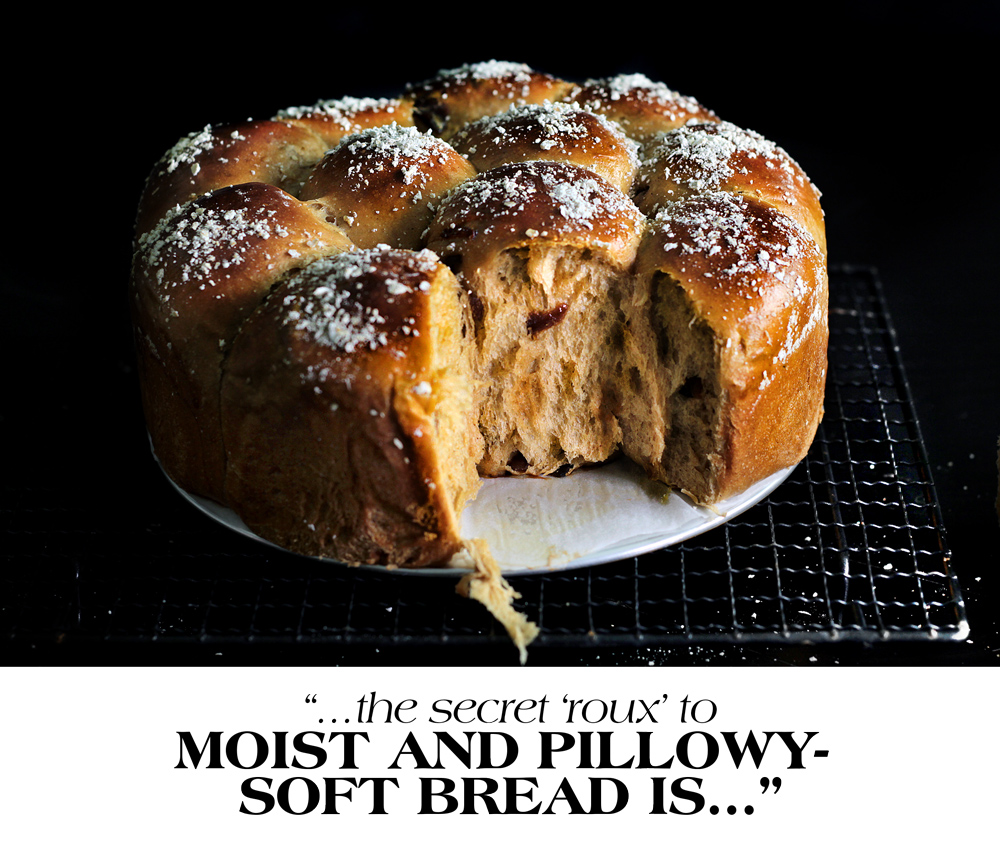

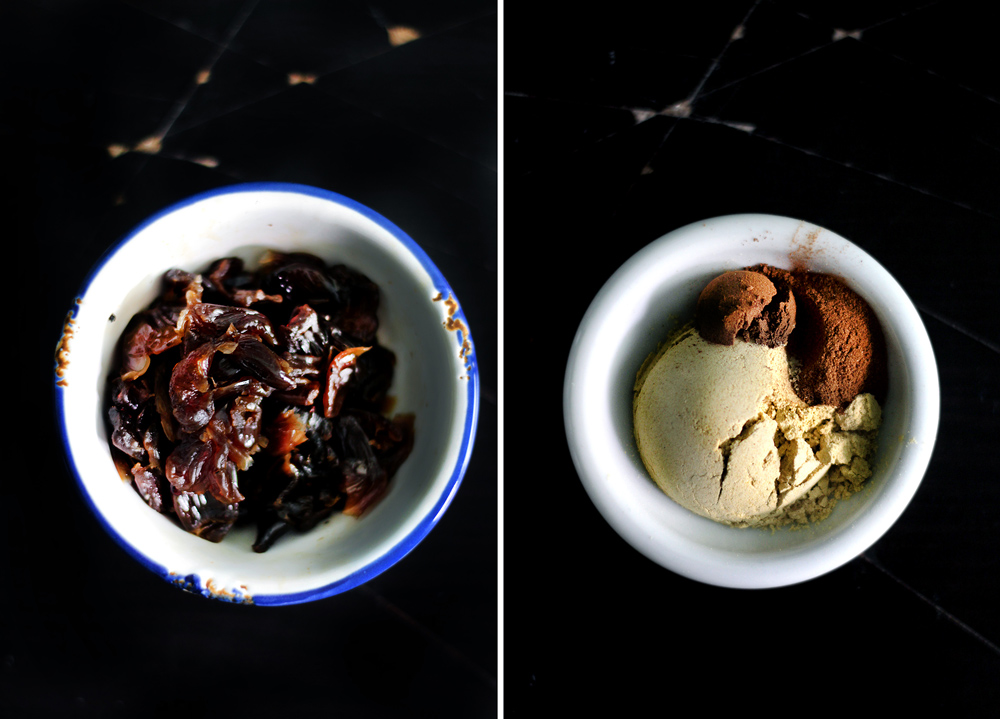
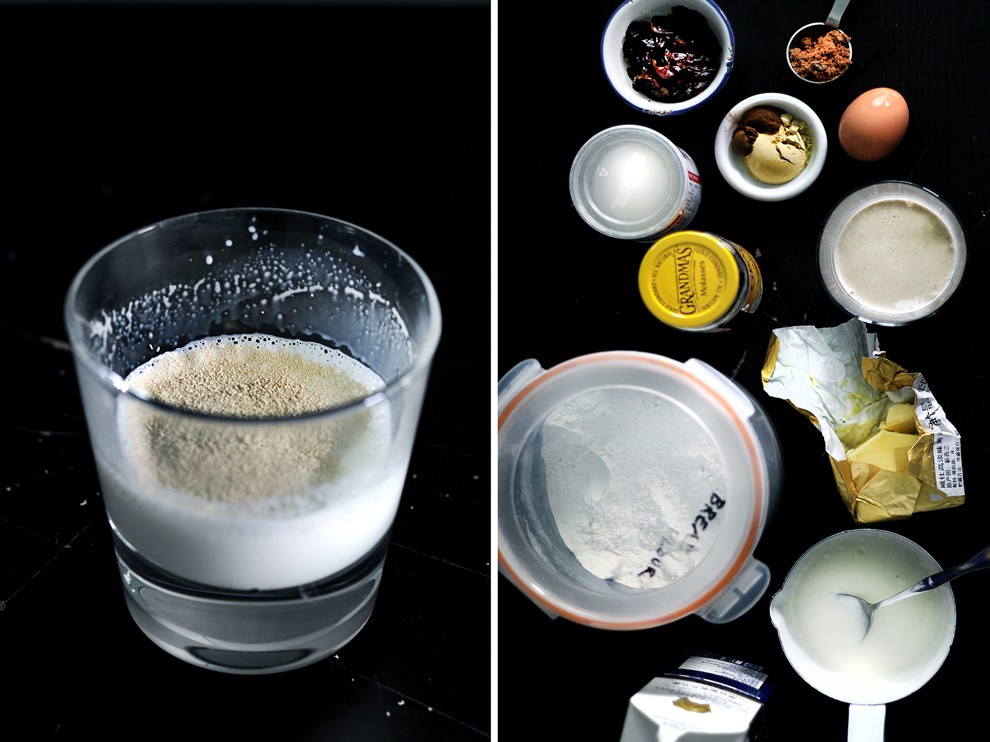

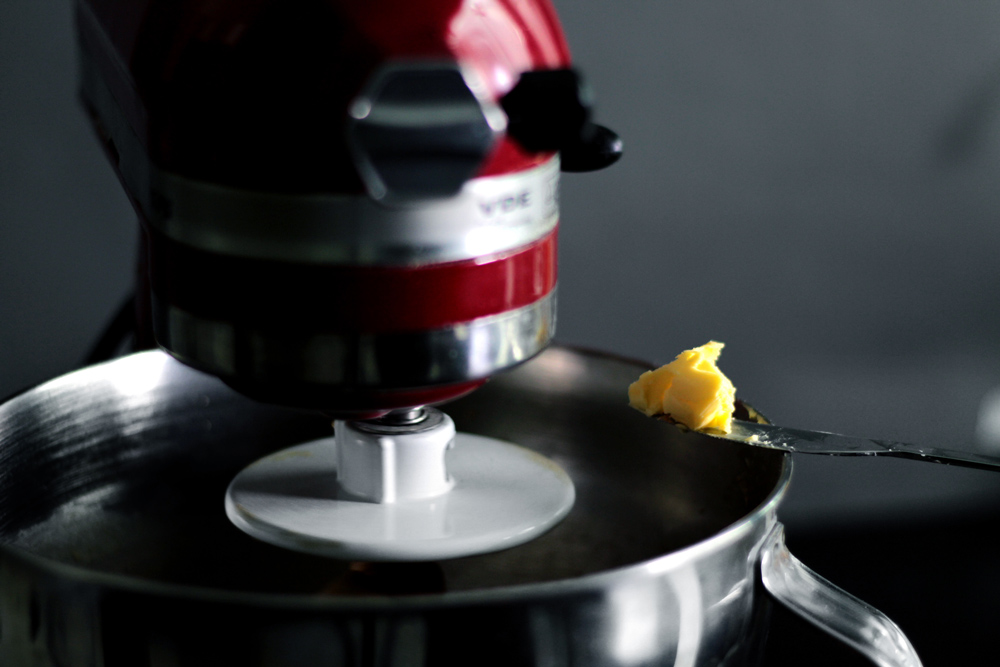
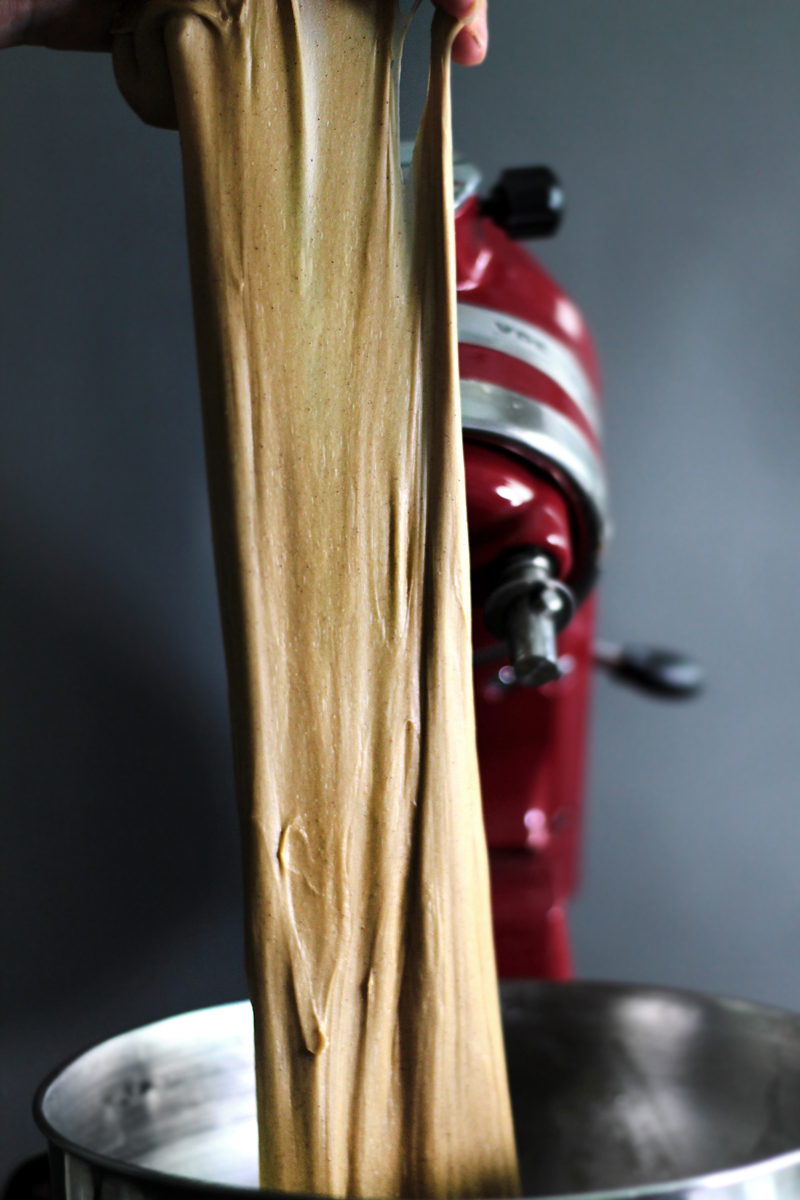
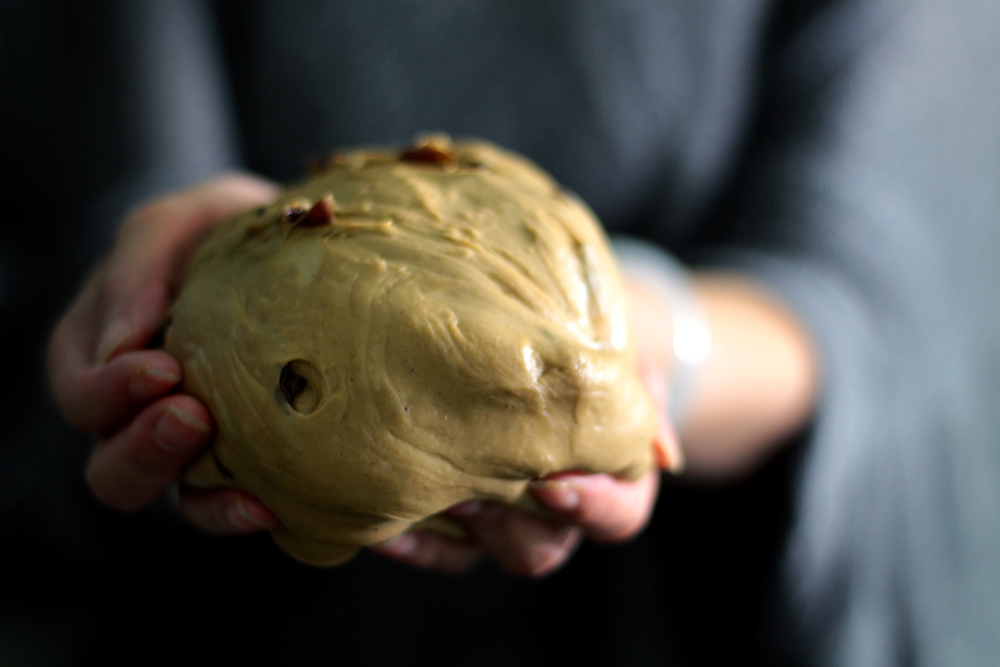
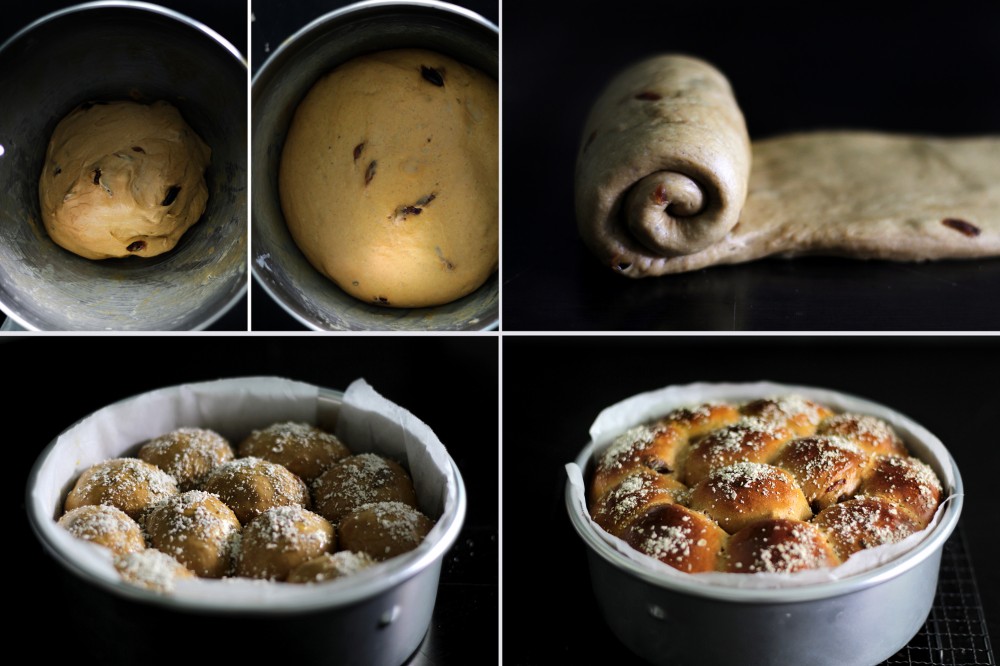
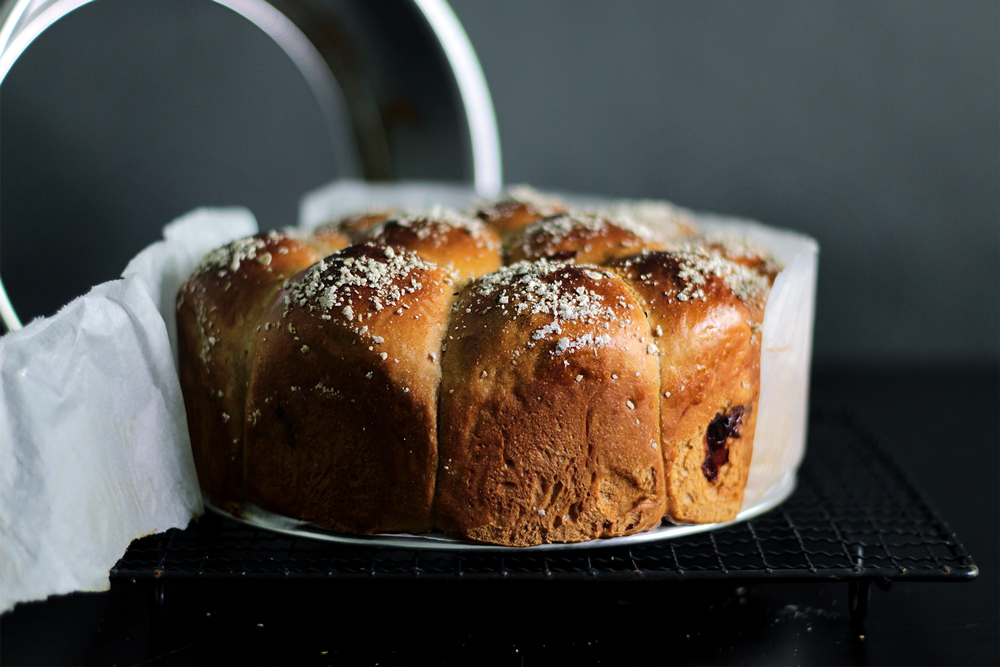
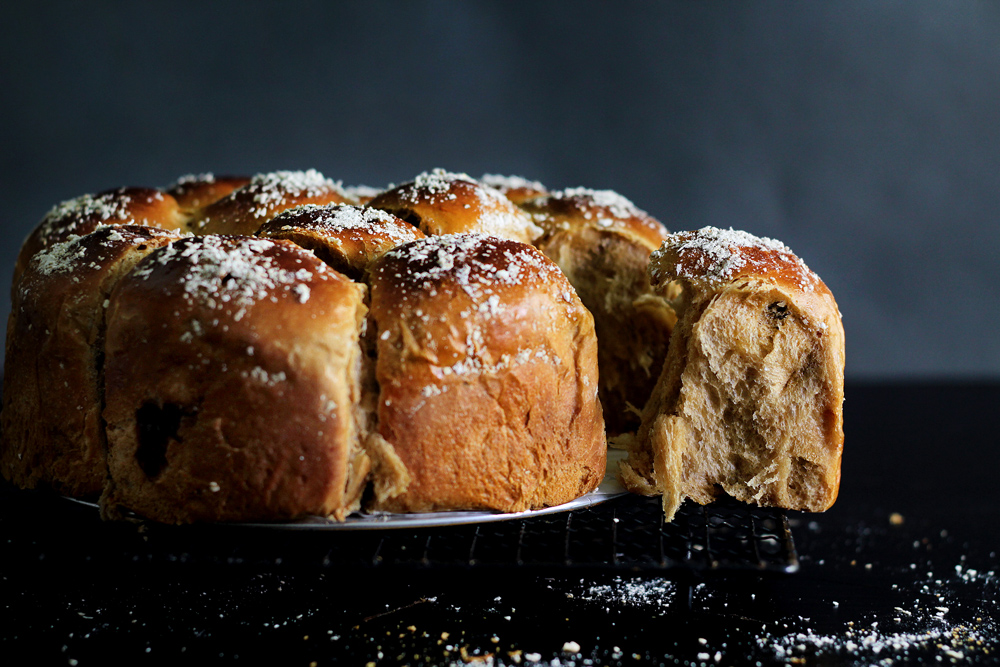
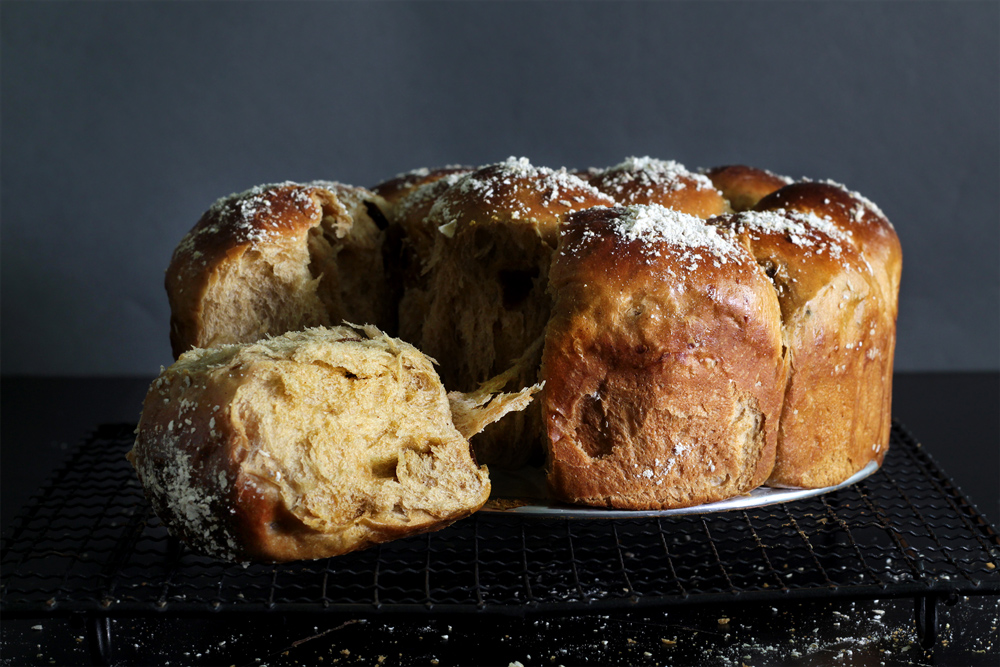

Averie @ Averie Cooks
11.22.2013at6:39 PMSuch gorgeous bread! Pinned!
The molasses, sweet cond milk, the spices, just how HIGH and tall and puffy it got…amazing. This wouldn’t last long here!
Belinda@themoonblushbaker
11.22.2013at7:27 PMI love it! I find the roux technique is the best way of maintain the moisture in bread.
I am simply balling that I do not have this in kitchen now….
Todd @ HonestlyYUM
11.23.2013at1:48 AMOMG, the Dreamy Milk Bread was my favorite, but this may just have it beat..
Smokin Don
11.23.2013at5:57 AMLady that sure looks delicious!!! If I was younger I would definitely have to try this! But at 71 I am now looking for shortcuts in my cooking! Don
Lisa
11.23.2013at6:32 AMJust curious, your notes along with your beautiful photos state “48-72 hours” but as I read through the recipe, I’m understanding it as I could potentially mix in the morning & have for lunch the next day. Did I miss something? This is stunning looking & look forward to trying it, but just wanted the clarification. Thanks so much!
Mandy L.
11.23.2013at2:46 PMHi Lisa, sorry for the confusion. I was referring to the process of making Japanese toast, which they let the roux sit for 12 hours, then the first dough would ferment for another 24~48 hours (depending on the baker), then everything would be mixed with a second dough for a second fermentation for another few hours (similar to my Dreamy Milk Toast-post, but minus the roux)…. phewww…
I’m not doing that in this particular recipe, sort of a shortcut version if you will. I’m however planning on a purple rice loaf that I might try this method on.
Chris
11.23.2013at7:53 PMWow! This looks amazing, nice photography.
Eudaimonya
12.09.2013at12:50 PMMexican hot chocolate and roux bread was the tree-decorating menu tonight, and it will be for all time. Incredible, delicious, just sweet enough to feel like a treat… perfect! I made a few slight alterations: moscato instead of dark rum, golden raisins instead of longan, ginger reduced to 2 tsp, cinnamon increased to 1/2 tsp, added 1/4 tsp nutmeg, added chopped pistachios toasted in butter. I also misremembered how many pieces I was supposed to divide the bread into and made 6 gargantuan, delicious, fluffy rolls instead of 12 smaller ones. They were the perfect size for a hearty holiday snack so I’m going to keep making them that way. 1 quick tip for rising: put the dough in the oven with the oven light on, giving the light time to warm up first. The first proof was done in 2 hours instead of 3, and the second proof was done in about 1 hour 20 mins. The way to tell the second proof is done is to gently poke a small dent the dough. If the dough feels firm and the dent fills in immediately it’s not ready. If the dough feels soggy and the dent just sits there it’s too late. If the dough is springy and the dent fills in slowly it’s just right. Poke a few different places each time to verify, because different spots rise at slightly different rates. If some dents still fill in a little quickly but other dents are just right go ahead and bake. Thank you, Lady, for posting this recipe, it’s divine!
Mandy L.
12.09.2013at8:07 PMEudaimonya, thank you for all the tips!!
Eudaimonya
12.10.2013at2:28 PMYou’re welcome! The poke test has been invaluable to me during baking. Before I learned it there were some very sad, heavy, rock hard loaves of bread being baked in my kitchen. :(
Sheila
12.27.2013at4:40 PMI am not able to find molasses. can i substitute it with some thing else?
Mandy L.
12.27.2013at10:47 PMSheila, my best bet would be to replace it with dark brown sugar, but expect more sweetness as a result.
Isabel
01.04.2014at9:15 AMI’m a little confused about the shaping part — why is it necessary to roll out the dough and curl it into a log, twice? Is this some kind of a lamination technique?
Mandy L.
01.04.2014at3:40 PMIsabel, its sort of a technique for making Japanese milk bread, which is supposed to create a more intricate “structure” within the bread. It doesn’t really take that much time to do so I do it every time. :)
Isabel
01.05.2014at2:04 AMAh thanks :) the bread looks awesome, going to try it soon!!
Winns
01.06.2016at12:24 AMJust curious, is this “secret roux” what Chinese bakeries use for their super soft roast pork bun dough?
mandy@ladyandpups
01.06.2016at1:48 AMWinns, I’m not entirely sure but you can try :)